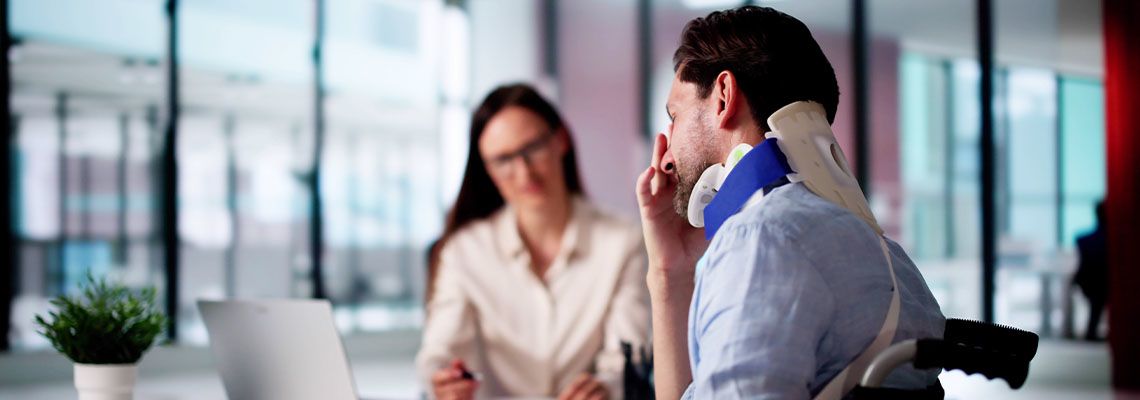
How Can You Prove Negligence in a Personal Injury Lawsuit?
When I think back on the first time I heard the word “negligence,” it sounded more like a general insult than a precise legal term. But once I began learning how the law actually defines it, I realized how critical it is in personal injury cases. Without proving negligence, there’s no foundation for recovery, no matter how badly someone’s been hurt.
At The Eskesen Law Firm, I’ve seen how proving negligence becomes the backbone of a claim. It’s what connects the careless action of another person or entity to the harm suffered. Over time, I’ve come to understand that proving negligence isn’t just about pointing fingers; it’s about methodically building a case that demonstrates duty, breach, causation, and damages. Each piece of evidence plays a role, and together they create a clear picture of what really happened.
Based in New York, New York, my firm serves clients throughout New York City, including Kings County (Brooklyn), Queens County, New York County (Manhattan), Bronx County, and Richmond County (Staten Island). Call today to schedule a free consultation.
The Concept of Negligence
Negligence is the legal term for failing to act with the care that a reasonable person would have exercised in the same situation. If that failure causes injury to another, then negligence can serve as the basis for a lawsuit. I think of it as a chain: if one link is missing, the whole claim can fall apart.
The law typically breaks negligence down into four key parts:
Duty of care: The responsibility someone has to act with reasonable care toward others.
Breach of duty: The moment when that responsibility is broken.
Causation: The connection between the breach and the injury suffered.
Damages: The measurable harm—physical, emotional, or financial—that resulted.
Each of these parts works together, and when I explain them to clients, I try to emphasize that they’re not just abstract legal terms but real-life requirements that must be proven step by step.
Duty of Care in Personal Injury Cases
To prove negligence, I always start with duty. It’s the foundation. Without showing that someone owed a duty of care, there’s no case.
For example, drivers owe a duty to follow traffic laws and keep others safe on the road. Property owners owe visitors a duty to maintain safe conditions. Doctors owe patients a duty to provide care that meets professional standards.
Breach of Duty and How to Prove It
A breach of duty happens when someone fails to live up to that obligation of care. This could look different depending on the situation.
Driving behavior: Running a red light, texting while driving, or speeding.
Property conditions: Ignoring broken stairs, failing to remove ice, or neglecting security.
Professional conduct: A medical provider prescribing the wrong medication or a contractor ignoring safety codes.
When I try to prove breach, I rely on evidence. That might mean police reports, surveillance footage, photographs, or even witness testimony. Each piece tells part of the story and helps confirm that the duty of care wasn’t upheld.
Connecting Breach to Injury Through Causation
Even when I’ve shown duty and breach, there’s another step—proving that the breach actually caused the injury. This is where many personal injury cases get complicated.
For instance, if someone already had a back problem, I need to demonstrate how the car accident exacerbated it. That usually means bringing in medical records and sometimes professional testimony to prove that the injury is directly tied to the negligent act.
I think of causation as the bridge between wrongful conduct and real harm. Without that bridge, the other side can argue that the injuries came from somewhere else.
Gathering Evidence for Negligence
Building a personal injury lawsuit is all about evidence. I always explain that it’s not enough to tell a story—I need proof that backs up every point.
Some of the most valuable forms of evidence include:
Photographs and videos: Images from the scene that show conditions, injuries, or property damage.
Witness statements: Firsthand accounts of what happened.
Medical records: Documentation that ties injuries directly to the event.
Police or accident reports: Official documents that describe the incident.
Professional testimony: Professionals who can explain technical details, like medical effects or accident reconstruction.
When these pieces are combined, they form a compelling narrative that makes negligence undeniable. It’s this combination of evidence that transforms a claim from an allegation into a case that can stand firm in court.
Common Challenges in Proving Negligence
While the steps might sound straightforward, I’ve learned that proving negligence isn’t always simple. Defense lawyers often try to break the chain at any point.
Some of the most frequent challenges include:
Disputed causation: Arguing that the injuries were preexisting.
Comparative fault: Claiming the injured person was partly responsible.
Insufficient evidence: Suggesting that proof is lacking or unreliable.
Minimizing damages: Downplaying the severity of injuries or their impact.
To manage these challenges, I prepare thoroughly. Anticipating the arguments on the other side helps me strengthen each piece of my case.
The Impact of Comparative Negligence
In many personal injury cases, comparative negligence comes into play. This means that even if the injured person shares some responsibility, they can still recover damages—but the amount may be reduced.
For example, if a jury finds that someone was 20% at fault in a car accident, their damages may be reduced by that percentage. I often remind clients that admitting some responsibility doesn’t automatically mean a case is ruined. What matters is proving the other party carried the greater share of blame.
How Lawyers Strengthen Negligence Claims
Having worked on numerous personal injury cases, I’ve seen firsthand the value of effective legal representation. A lawyer doesn’t just file paperwork—they build the case piece by piece.
Some of the ways lawyers strengthen negligence claims include:
Investigating thoroughly: Collecting evidence beyond what’s immediately apparent.
Interviewing witnesses: Capturing statements while memories are fresh.
Working with professionals: Bringing in medical or technical testimony when needed.
Handling negotiations: Managing communication with insurance companies.
Preparing for trial: Building a case strong enough to present before a judge or jury.
Each of these efforts aims to make negligence clear and undeniable. That’s why having the right lawyer by your side can make all the difference when proving negligence in a personal injury case.
Why Negligence Matters Beyond the Courtroom
Negligence isn’t just a legal concept—it’s also about accountability. When I work on these cases, I think about how proving negligence often prevents the same harm from happening to someone else.
Whether it’s unsafe property conditions or reckless driving, holding someone accountable helps set a standard for safer behavior in the future.
That’s one of the reasons I believe in the process so strongly. Proving negligence in a personal injury lawsuit requires showing duty, breach, causation, and damages through clear evidence. I’ve seen how each step strengthens a case and helps clients pursue justice.
Contact Me Today
If you’re dealing with the aftermath of an accident caused by someone's negligence and considering a personal injury claim, contact The Eskesen Law Firm for trusted legal support. Based in New York, New York, my firm proudly serves clients across New York City, including Kings County (Brooklyn), Queens County, New York County (Manhattan), Bronx County, and Richmond County (Staten Island). Schedule a free consultation today and take the first step toward a smoother recovery.
